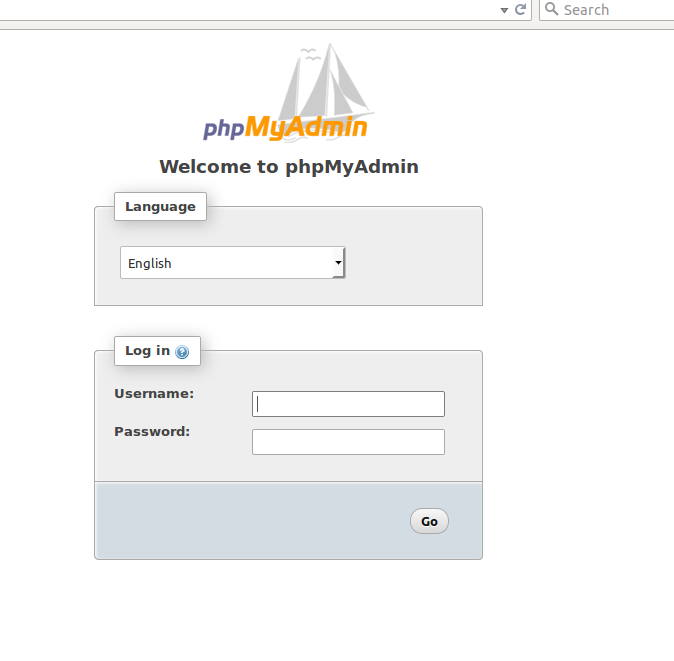

- Phpmyadmin setup how to#
- Phpmyadmin setup install#
- Phpmyadmin setup software#
- Phpmyadmin setup license#

Phpmyadmin setup license#
Read and accept the end user license agreement, and click Next.URL is unique and cannot be shared between two applications, andĮach application is required to have a base URL. The application is available after it has been deployed. The base URL (or root URL) is the URL where Leaving this field empty will deploy the application on As you type, Zend Server offers path suggestions, and updates the URL below.įile will cause the application to deploy with errors. You can add a new virtual host by clickingīase URL, which can only be a directory. If you have not yet defined a default server, the default virtual host Virtual Host - This field automatically displays the default server that is defined on the Administration | Settings page.Display Name - The name that Zend Server.After the application package is successfully downloaded, click Next.The Deploy Application wizard is displayed, and Zend Server begins downloading the application package. In the Deploy Sample Apps section, click the phpMyAdmin icon.In the Zend Server UI, go to the Getting Started page.
Phpmyadmin setup how to#
This procedure describes how to download and deploy the phpMyAdmin application package on Zend Server.Ĭurrently, deployment of phpMyAdmin on Zend Server can only be performed on Apache and nginx servers.
Phpmyadmin setup software#
PhpMyAdmin is a free software tool written in PHP, intended to handle the administration of MySQL over the Web.
Phpmyadmin setup install#
If you see this image, phpMyAdmin is installed correctly! To log in, use the username and password for the existing user of your DB.This topic explains how to install and configure phpMyAdmin on Zend Server. To verify that phpMyAdmin works, visit “ in your browser.

Then restart Apache using the following command: systemctl restart httpd Step 3: Test phpMyAdmin Require ip 127.0.0.1 Require ip ::1 Require ip IP_address # Apache 2.4 Require ip 127.0.0.1 Require ip ::1 Require ip IP_address If you want to open access just for specific host, replace " Require all granted ” with “ Require ip IP_address”: #Require ip 127.0.0.1 #Require ip ::1 Require all granted # Apache 2.4 #Require ip 127.0.0.1 #Require ip ::1 Require all granted To allow access to all, make the following changes: Just in case, save this original file before you start to edit it by entering the following command: cp /etc/httpd/conf.d/nf /etc/httpd/conf.d/īy default, phpMyAdmin denies access for all sources except localhost 127.0.0.1. You can leverage the yum system to install software by using the following command: yum install phpmyadminĪfter installation, the nf file should appear in the httpd /etc/ httpd /conf.d configuration catalogue. Step 1: Log on to VPSįirst, you need to log on to your VPS. you’ve installed Apache, PHP, and MariaDB). You’ve installed an SSH client ( PuTTy is our terminal of choice). Here’s a step-by-step tutorial on how to setup phpMyAdmin on a Virtual Private Server (VPS). phpMyAdmin supports a wide range of operations on MySQL and MariaDB including managing databases, tables, columns, relations, indexes, users, and permissions, which can be performed via the user interface while still providing the option to directly execute any SQL statement.


 0 kommentar(er)
0 kommentar(er)
